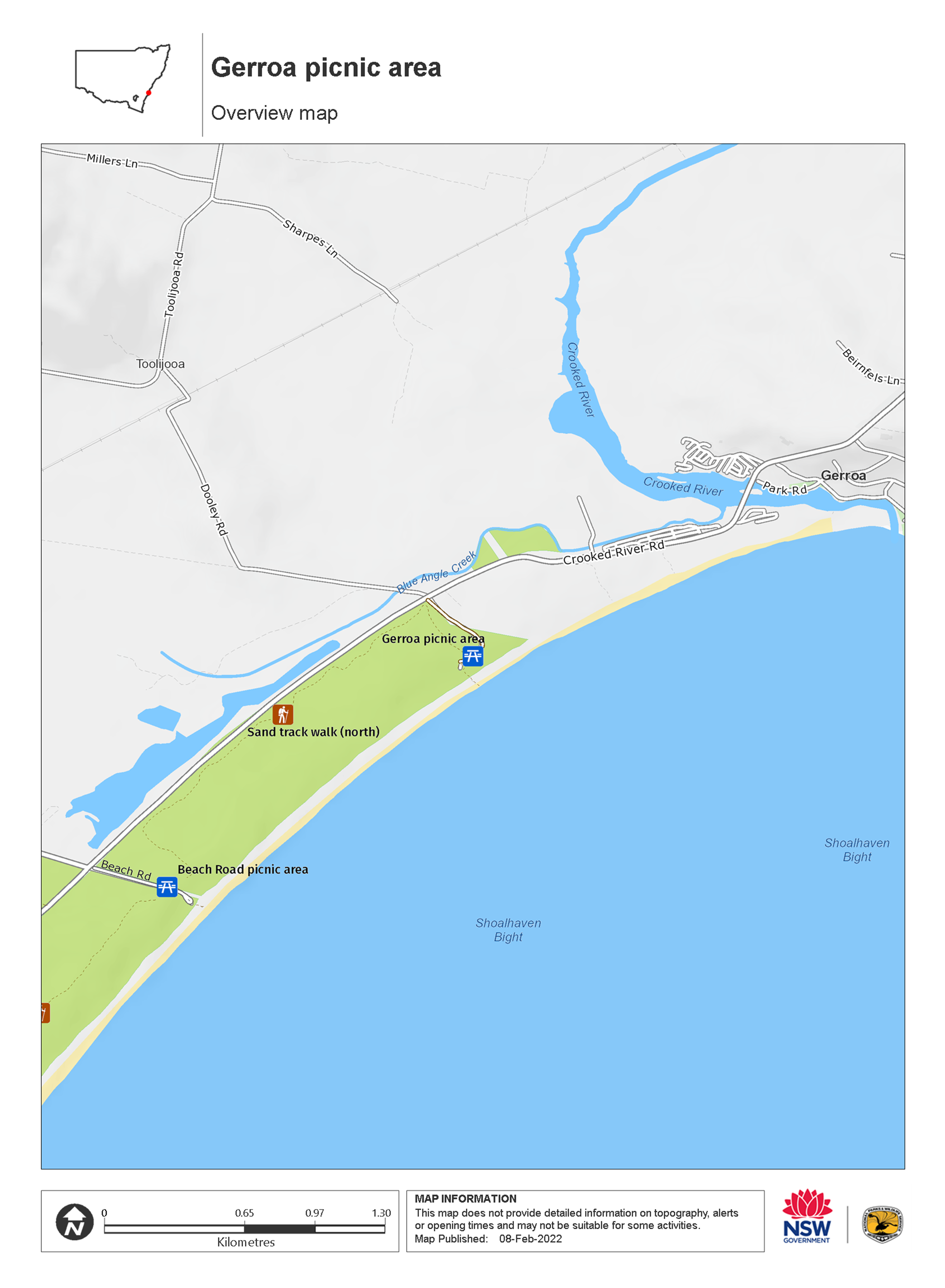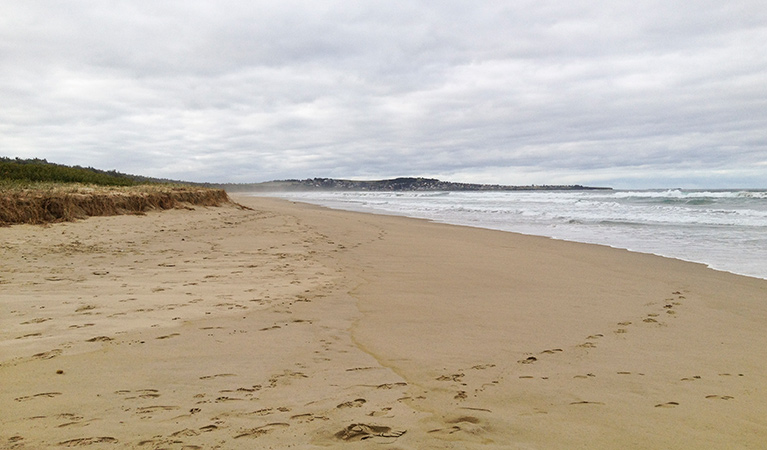Gerroa picnic area
Seven Mile Beach National Park
Overview
Plan a day trip or make a detour from your road trip by heading to Gerroa picnic area. Picnic by the beach in an intimate bush setting, near Gerroa on the beautiful South Coast of NSW.
- Type
- Picnic areas
- Accessibility
- Easy
- Opening times
In summer, Gerroa picnic area is open from 6am until 8pm everyday closed overnight. In winter, the picnic area is open 6am to 6pm.
- What to
bring - Hat, sunscreen, drinking water
- Please note
- Remember to take your binoculars if you want to birdwatch.
Surrounded by bush, yet only moments away from the beach, Gerroa picnic area is a perfect way to escape and unwind. It’s accessible and offers something for everyone, yet remarkably secluded and peaceful.
Find a grassy patch under the trees and spread out your blanket, or set up your feast on one of the picnic tables provided. After lunch, why not wander over the dunes to the nearby Seven Mile Beach for a swim or a spot of fishing? Take in fresh sea air and stroll along the golden stretch of beach.
If you enjoy birdwatching, take a walk through the forests along the Sand track walk (north) towards Beach Road picnic area. Look out for the white-naped Honeyeater, little wattlebird or the black-faced cuckoo-shrike. But when all else fails, just sit back, relax and enjoy the tranquil surroundings with a good book and the sound of the waves breaking in the distance.
Map

Map legend

Local alerts
For the latest updates on fires, closures and other alerts in this area, see https://uat.nswparks.cloud/things-to-do/picnic-areas/gerroa-picnic-area/local-alerts
General enquiries
- National Parks Contact Centre
- 7am to 7pm daily
- 1300 072 757 (13000 PARKS) for the cost of a local call within Australia excluding mobiles
- parks.info@environment.nsw.gov.au
Park info
- in Seven Mile Beach National Park in the South Coast region
Seven Mile Beach National Park is always open but may have to close at times due to poor weather or fire danger.
Visitor info
All the practical information you need to know about the Gerroa picnic area.
Maps and downloads
Learn more
Gerroa picnic area is in Seven Mile Beach National Park. Here are just some of the reasons why this park is special:
Aboriginal culture

The park’s beach, forest and wetland environments near Coomonderry Swamp were once important sources of food and materials for Aboriginal people. Part of the Dharawal language group, they had strong associations with other groups north to Sydney, inland to the southern highlands and south as far as Gippsland in Victoria. Today, you can see shell middens along the length of the foredune and in the forest. There are also several important ceremonial and culturally significant sites for Aboriginal people within the park.
- Then and now: Aboriginal culture Aboriginal culture then and now is a Stage 1 (Years 1-2) school excursion in Seven Mile Beach National Park, focusing on HSIE. Through story and creative expression, the life and culture of the local people are shared.
Aviation history

Sir Charles Kingsford Smith started his historic 1933 trans-Tasman flight to New Plymouth in New Zealand from Seven Mile Beach. This flight led to the inauguration of the trans-Tasman airmail service, making Seven Mile Beach a significant place in aviation history. In November 1933, Kingsford Smith ran passenger flights from the beach and in 1934, he used it for an emergency landing.
It's a wild world

For animal-lovers, Seven Mile Beach National Park has lots to offer. There are great birdwatching opportunities in the tall forests and at Coomonderry Swamp. Rainbow lorikeets, king parrots, and rosellas can all be seen, whilst thornbills, wrens, New Holland honeyeaters and brown cuckoo doves are also in abundance. There are also plenty of small mammals to see, such as antechinus and a range of tree-dwelling mammal species. As you wander through the forests, keep your eyes out for the greater gliders found in the park. Gliders are best seen at night, so be sure to enquire about a spotlight walk with NPWS Discovery Ranger.
- Sand track walk (north) Take the Sand track walk through the forest and admire the birdlife at Seven Mile Beach National Park, near Nowra. Pack a picnic lunch, and enjoy sweeping views at the end.
Unique landscape

This park supports several significant and endangered natural habitats. The forests are one of the last intact areas of Bangalay and blackbutt sand dune forest on the south coast. Coomonderry Swamp is also the only large semi-permanent freshwater wetland on the south coast. The area is significant as it shows a relatively intact example of a large scale dune barrier formed during the end of the last ice age, approximately 6000 years ago.
- Sand track walk (north) Take the Sand track walk through the forest and admire the birdlife at Seven Mile Beach National Park, near Nowra. Pack a picnic lunch, and enjoy sweeping views at the end.
- Sand track walk (south) Take the Sand track walk through the ancient and untouched forest at Seven Mile Beach National Park, near Nowra, where you can go fishing, swimming, birdwatching and picnic.

